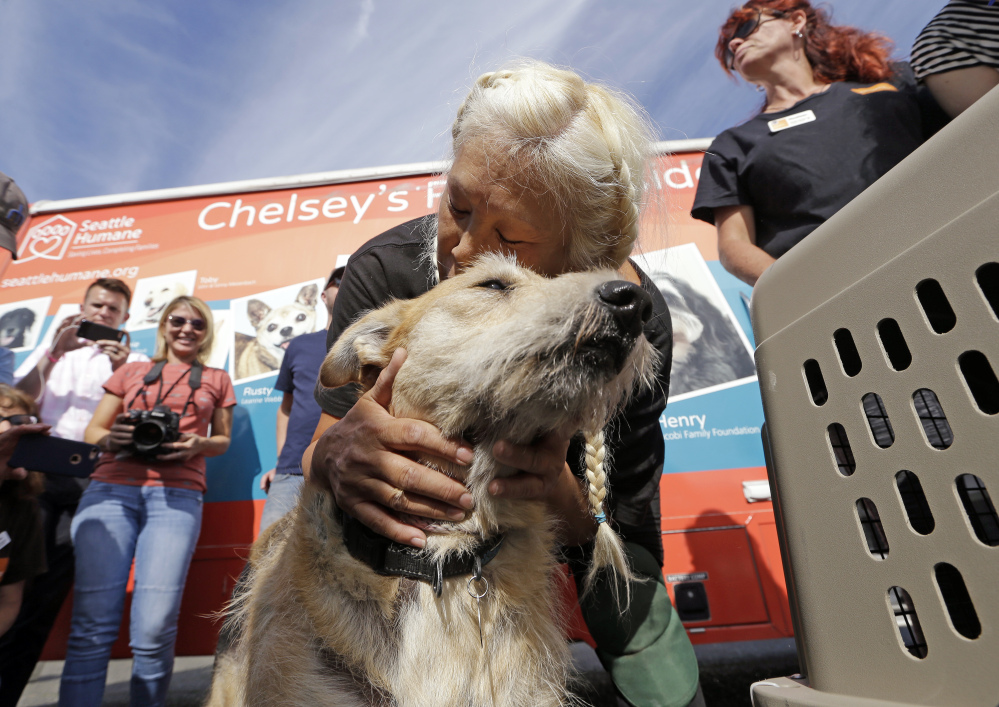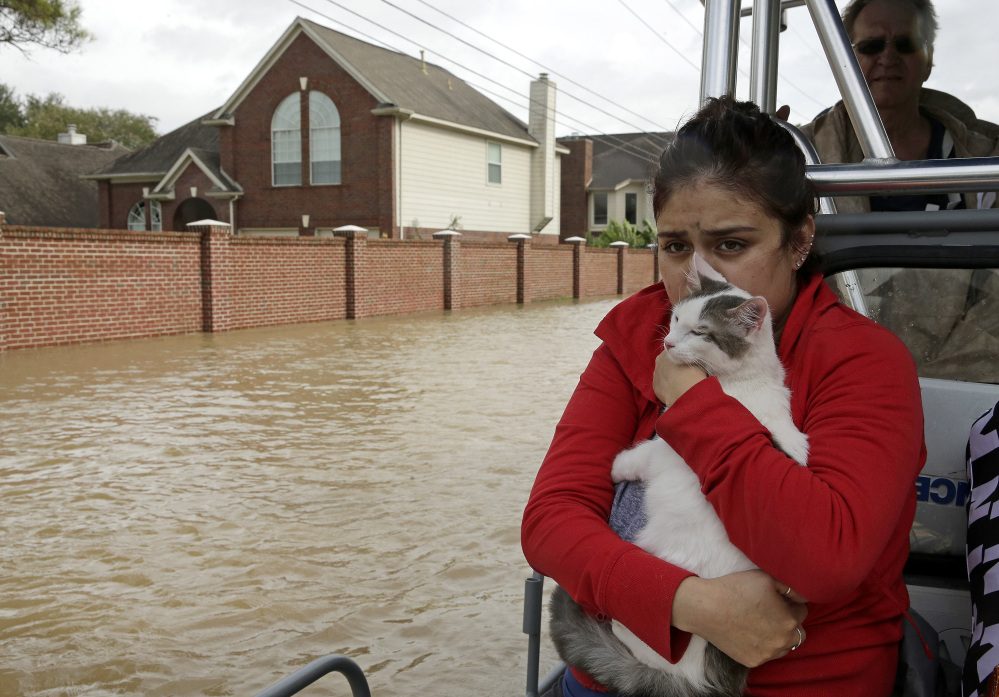As Hurricane Harvey pelted Houston with heavy rains over the weekend, a local television news station broadcast footage of flood evacuees sitting outside the George R. Brown Convention Center. The people weren’t waiting for space inside what would become a massive emergency shelter. They were choosing to remain outdoors because their pets were not allowed in.
That policy changed within a day, after a top elected official made clear that both humans and animals were welcome at the city’s evacuation centers.
“We all saw what followed Hurricane Katrina, where people weren’t allowed to keep their pets with them, so they said, ‘Well, never mind, we’ll just stay outside,’ ” Harris County Judge Ed Emmett told reporters Sunday evening. “We obviously don’t want that to happen.”
Emmett wasn’t making just a passing reference to the catastrophe that hit New Orleans in 2005. During that disaster, many residents stayed put – and died in some cases – rather than heed rescuers’ instructions to leave pets behind as waters inundated homes.
Others faced wrenching choices when they arrived at shelters that would not allow animals. One small white dog, Snowball, became a national symbol of these emotional separations after he was taken from the arms of a child who was boarding a bus to Texas that did not take pets. The boy cried so hard, according to an Associated Press report, that he vomited.
One 2006 poll found that 44 percent of people who chose not to evacuate during Katrina did so because they did not want to abandon their pets. Even so, the Louisiana SPCA estimated, more than 100,000 pets were left behind and as many as 70,000 died throughout the Gulf Coast.
A dozen years later, Katrina is viewed as a watershed moment in planning for pets during natural disasters. It changed federal and state policies – and, animal advocates and experts say, made clear that Americans have widely embraced the idea of dogs and cats as family members.
“You saw pictures of dogs standing on roofs and cats swimming in these toxic waters, and there was a huge public outcry,” said journalist David Grimm, who wrote about the impact in his book, “Citizen Canine.” Katrina “was a real turning point,” he added, “where suddenly it wasn’t just, ‘This is how I view my pets.’ It’s, ‘This is how everyone views their pets.’ “
At the time, emergency management plans took only people into account. The result was an ad hoc approach to animals, with some responders flat-out turning away dogs and others agreeing to evacuate them. Animal protection groups, which quickly became overwhelmed with displaced critters separated from their owners, often found themselves at odds with local and state officials, said Wayne Pacelle, chief executive of the Humane Society of the United States.
The sense that systems had failed both pets and people quickly reached Capitol Hill. In 2006, Congress overwhelmingly passed legislation requiring local and state authorities who want federal emergency grants to include pets in disaster plans. It also authorized the use of federal funds for pet-friendly emergency shelters.
Snowball was the impetus.
“The dog was taken away from this little boy, and to watch his face was a singularly revealing and tragic experience,” Rep. Tom Lantos said at the time. The California Democrat, who died in 2008, sponsored the House version of the Pet Evacuation and Transportation Act. More than 30 states now have laws that address disaster planning for pets and service animals. Texas requires its emergency management officials to help localities devise plans “for the humane evacuation, transport and temporary sheltering of service animals and household pets in a disaster.”
Not all evacuation centers there are accepting pets this week, but many are accommodating them in separate areas or coordinating with off-site shelters to house them.
The images and stories out of southeast Texas – of rescue boats loaded with dogs and people – are far different from those that emerged during Katrina.
Lisa Eicher’s experience offers just one example. When the Conroe resident woke on Monday, floodwaters had nearly submerged the 15 feet of steps up to the first floor of her family’s home. Before she, her husband and four children could pack more than a garbage bag of clothes, firefighters had rolled up outside in a muddy dump truck and were telling them to leave.
“We have two kids with Down syndrome, a pig and a three-legged dog,” Eicher recalled telling them.
“Sounds good,” one firefighter responded. “Let’s do this.”
Send questions/comments to the editors.





Comments are no longer available on this story